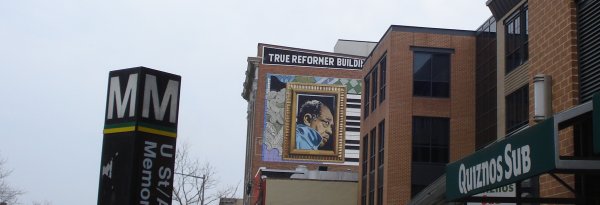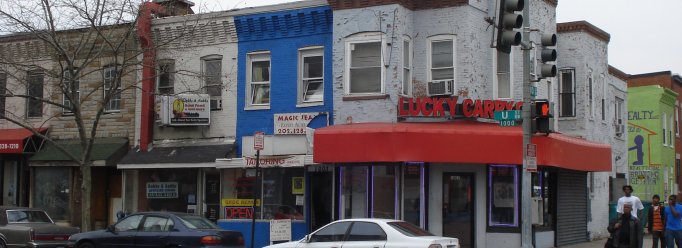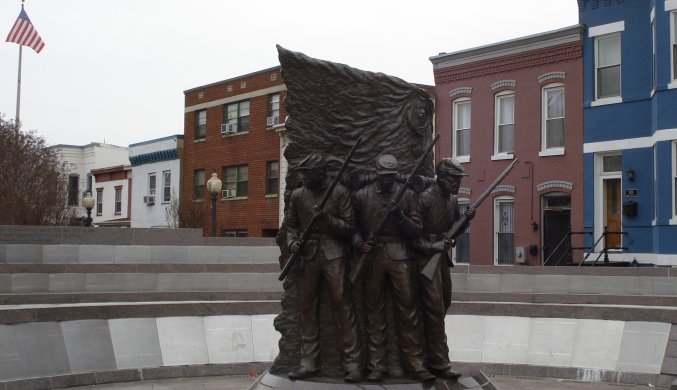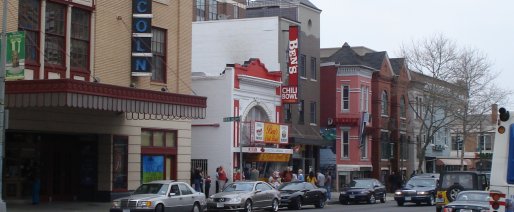U Street was a cultural center in the past and is so again. It was where Duke Ellington played. For a while it was the biggest and most prosperous black community area in the U.S. It fell on hard times in the 1960s, but recently has bounced back.

My friend Victor bought a townhouse in that neighborhood about fifteen years ago. He got a really good deal on the place, but the neighborhood wasn’t nice back then. We went to dinner at his house one time and somebody set a car on fire a couple of houses down from his. Victor assured us that this had never happened before and it evidently was an abandoned car. The fire was set more out of boredom than malice. Still, it is not something you see every day and it is an unpleasant smell. Things are much better now. A big plus is the Green Line Metro stop. Development follows the Metro in the suburbs and redevelopment comes to neighborhoods near city Metro stops.

At the Metro stop is the African American Civil War Monument. It looks a little out of place. Most civil war monuments are in the midst of fields and forests. This one is a little cramped in the city, surrounded by streets and pavement. There was not very much to see at the monument itself. I walked around a couple of times, but there was a sign for a museum a couple blocks away, so I walked up there.

The museum was worth the trip because of Hari, one of the curators. He had an obvious love for the history and a knowledge that went along with that. He told me that around 10% of the Union Army was made up of African Americans. They were often employed in reconnaissance and what today we would call counter insurgency. They protected the camps and the supply lines. It is a crucial and very dangerous task, but one that by its nature is largely done away from the main body in relative obscurity. You can read more re the museum at www.afroamcivilwar.org. It is worth going to see. It covers a neglected part of our American history. We should remember bravery and honor sacrifice.
Hari told me about a John Wells Jefferson, who was a colonel in the 8th Wisconsin Infantry, raised Wisconsin in 1861 and served primarily in the Mississippi Valley. Jefferson was a descendant of Sally Hemmings and probably Thomas Jefferson (DNA evidence has recently indicated that Sally Hemming’s children were at least related to Jefferson). John W. Jefferson was part African American, but passed as white, according to what Hari told me. The connection is with Chrissy’s ancestor, who was with a Wisconsin regiment during the Civil War. I don’t know if he was in the 8th Wisconsin. He wrote a series of letters home. The originals are in Norwegian (the family had immigrated from Norway to Wisconsin only a couple years before). I saw translations but I don’t remember the details. I will have to find the letters and see what I can find out.

I also saw Ben’s Chili Bowl. It has been more popular since Barack Obama went in there for a bowl of Chili. I like chili, but there was a big crowd so I didn’t go in. I wasn’t that hungry. Anyway, I have to be careful with chili. I don’t get along with the commonly used chili spice – cumin. I cannot really taste it, but it gives me awful heartburn and is better avoided.

Above is the equestrian statue of Winfield Scott Hancock, one of the heroes of Gettysburg.
